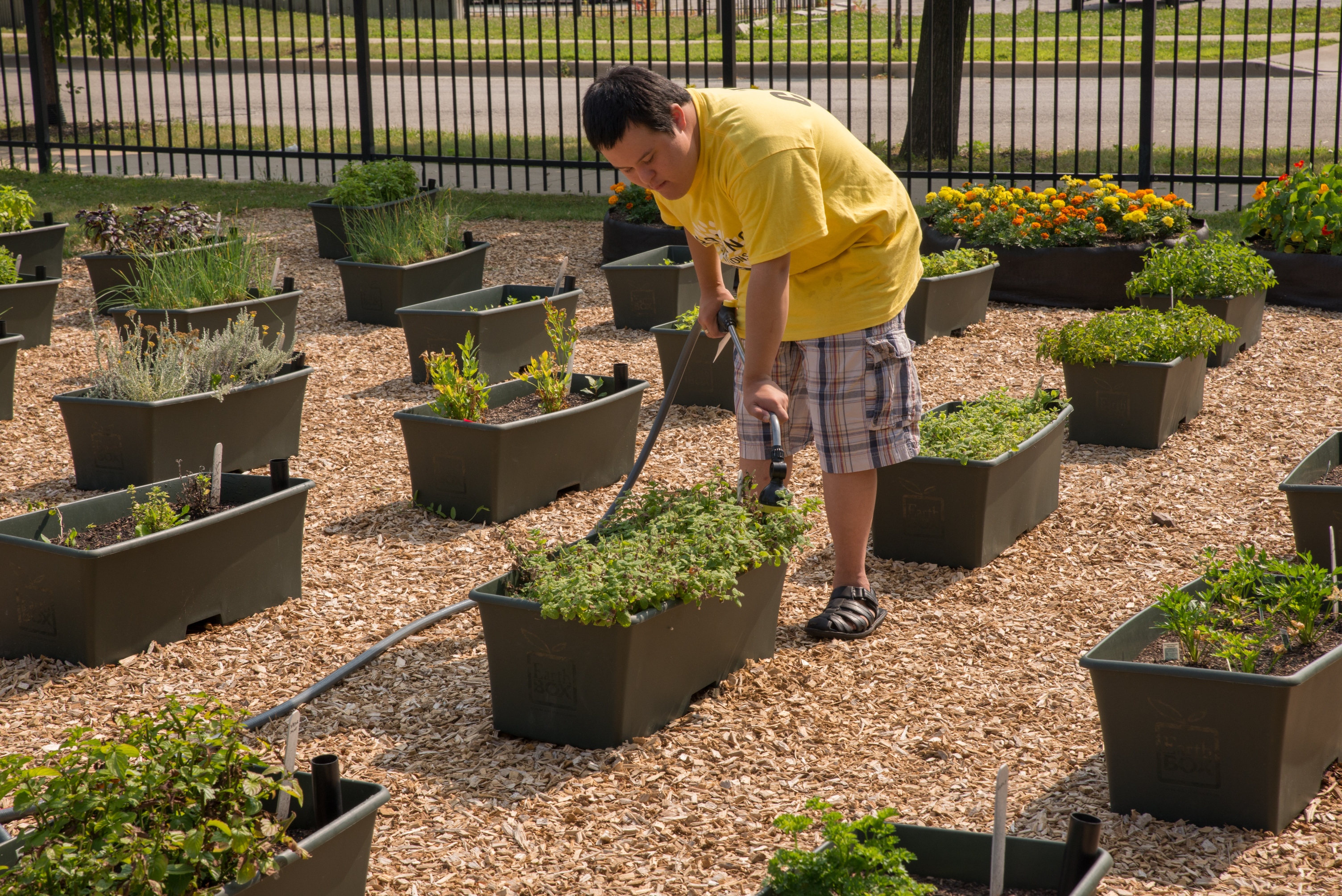


Water features and birds are also common sound components. This includes plants like bamboo, grasses, trees, as well as non-living elements like bells and wind chimes. Sound components in a sensory garden are often things that make sounds naturally in a breeze. These plants can also be used to attract birds and butterflies to the garden, which can add additional sight variety. Sight components in a sensory garden include traditional garden elements like colorful plants and flowers, which are sometimes clustered together to assist people with vision impairments. In addition to plants, non-living elements, such as water features and sculptures, may be incorporated. Sensory garden design is generally based around the five Aristotelian senses, but it can also include other senses such as proprioception and balance. Sensory gardens usually have an enhanced infrastructure to permit wheelchair access and meet other accessibility concerns the design and layout provides a stimulating journey through the senses, heightening awareness, and bringing positive learning experiences. Many sensory gardens devote themselves to providing experience for multiple senses those specialising in scent are sometimes called scented gardens, those specialising in music/sound are sound gardens where the equipment doubles up to provides an enhanced opportunity for strategic developmental, learning and educational outcomes. Depending on the user group, other provisions may integrate sound and music more centrally to combine the play needs of younger users with their sensory needs. A sensory garden, for example, may contain features accessible to the disabled individual such as: scented and edible plants, sculptures and sculpted handrails, water features designed to make sound and play over the hands, textured touch-pads, magnifying-glass screens, braille and audio induction loop descriptions. Sensory gardens can be designed in such a way as to be accessible and enjoyable for both disabled and non-disabled users. As a form of horticultural therapy, they may act as therapeutic gardens to help in the care of people with dementia. They can be used in the education of special-needs students, including autistic people. Sensory gardens have a wide range of educational and recreational applications. Sensory gardens are designed to provide opportunities to stimulate the senses, both individually and in combination, in ways that users may not usually encounter. Ī sensory garden is a self-contained garden area that allows visitors to enjoy a wide variety of sensory experiences.

The 'Blind People's Garden' ( Blindengarten) in Knoops Park is designed to allow people with visual impairments to find their way around the garden and experience its features without assistance.


 0 kommentar(er)
0 kommentar(er)
